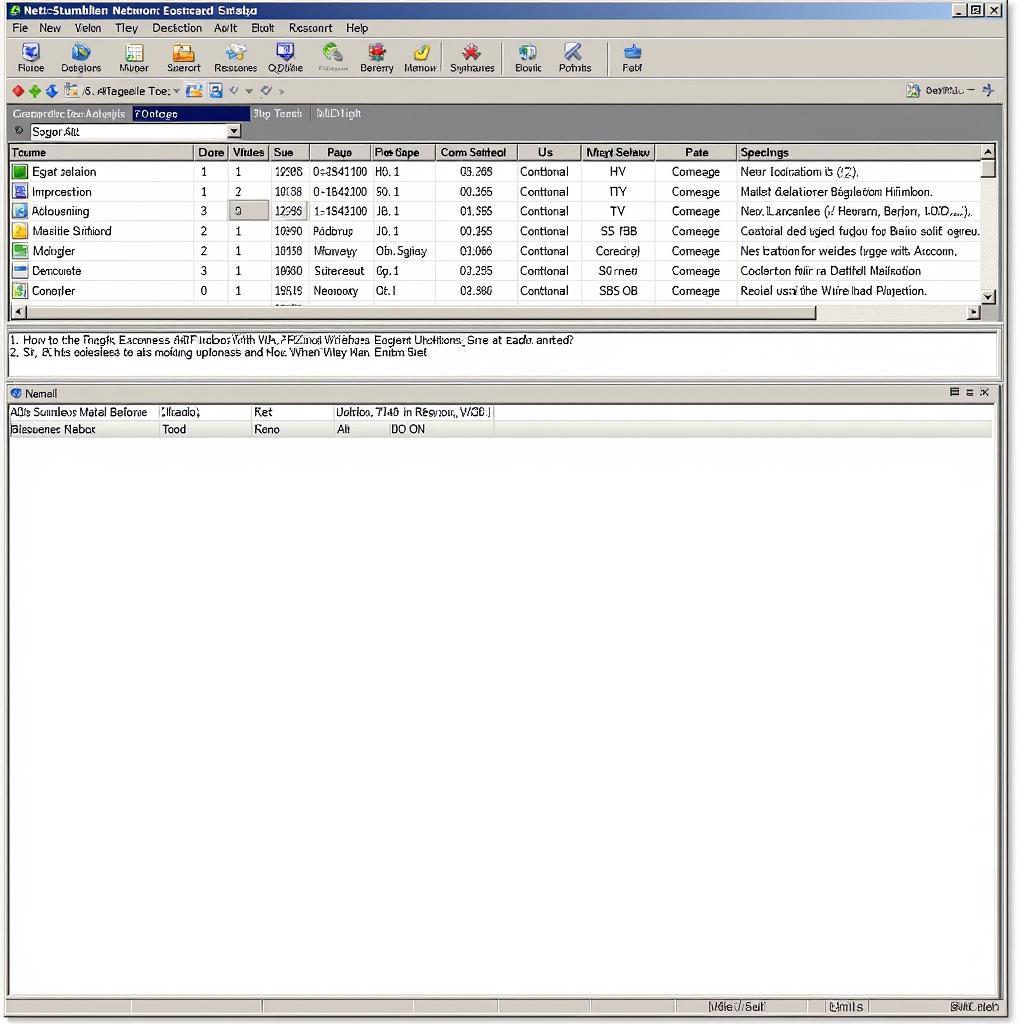Scanning tools are essential for maintaining a robust security posture in today’s digital landscape. They help organizations proactively identify vulnerabilities and weaknesses in their systems and applications before attackers can exploit them. This comprehensive guide will delve into the world of Scanning Tools In Information Security, exploring their types, benefits, and how to choose the right tools for your needs.
 Network Vulnerability Scanning
Network Vulnerability Scanning
Understanding the Importance of Scanning Tools
In an era of increasingly sophisticated cyber threats, relying solely on reactive security measures is no longer sufficient. Scanning tools empower organizations to shift to a proactive security approach by identifying vulnerabilities before they are exploited. By regularly scanning their systems and applications, businesses can:
- Identify and mitigate vulnerabilities: Scanning tools can uncover a wide range of vulnerabilities, including software flaws, misconfigurations, and weak passwords.
- Reduce the risk of data breaches: By proactively addressing security gaps, organizations can significantly minimize the likelihood of successful cyberattacks and data breaches.
- Meet compliance requirements: Many industry regulations, such as HIPAA, PCI DSS, and GDPR, mandate regular security assessments and vulnerability scanning.
- Improve overall security posture: Regular scanning helps organizations stay ahead of emerging threats and maintain a strong security posture.
Types of Scanning Tools
A diverse range of scanning tools is available, each catering to specific security needs. Some of the most common types include:
1. Network Vulnerability Scanners
These tools scan networks for potential security weaknesses in devices, network infrastructure, and applications. They identify open ports, misconfigured settings, and known vulnerabilities in software versions.
2. Web Application Scanners
Web applications are prime targets for attackers. Web application scanners specifically test these applications for vulnerabilities such as cross-site scripting (XSS), SQL injection, and cross-site request forgery (CSRF).
top free web application scanning tools can be invaluable for small businesses and individual developers looking to enhance their web application security without incurring significant costs.
3. Database Scanners
Databases often contain sensitive information, making them attractive targets for cybercriminals. Database scanners assess databases for vulnerabilities, including unauthorized access, configuration issues, and weak security controls.
4. Vulnerability Management Tools
These tools go beyond simple vulnerability identification. They provide a centralized platform for managing vulnerabilities, prioritizing remediation efforts, and tracking progress over time.
Choosing the Right Scanning Tools
Selecting the appropriate scanning tools depends on several factors, including the size and complexity of the organization, the types of systems and applications used, and the budget allocated for security. Here are some key considerations:
- Scope of Coverage: Ensure the tools cover all relevant assets, including networks, web applications, databases, and cloud environments.
- Accuracy and False Positives: Choose tools known for their accuracy and low false-positive rates to avoid wasting time and resources on non-issues.
- Remediation Guidance: Tools that provide actionable remediation guidance can significantly streamline the vulnerability management process.
- Integration Capabilities: Consider tools that integrate with existing security solutions, such as SIEMs and SOARs, to enhance overall security visibility and response capabilities.
retina nessus acas scanning tool offers a comprehensive suite of features, making it a popular choice for organizations of all sizes.
Best Practices for Effective Scanning
To maximize the effectiveness of scanning tools, organizations should adopt these best practices:
- Establish a Regular Scanning Schedule: Conduct scans regularly, such as weekly or monthly, to identify and address vulnerabilities promptly.
- Prioritize Vulnerability Remediation: Focus on addressing high-risk vulnerabilities first based on their potential impact and likelihood of exploitation.
- Automate Scanning Processes: Automate scanning tasks to ensure consistency and reduce the workload on security teams.
- Stay Informed About Emerging Threats: Keep abreast of the latest security threats and vulnerabilities to adjust scanning procedures accordingly.
“Regular vulnerability scanning is like getting regular health checkups for your IT systems. It helps identify and address potential problems before they become major issues,” says John Smith, a Cybersecurity Expert at SecureTech Solutions.
Conclusion
Scanning tools are indispensable for organizations seeking to maintain a robust security posture. By proactively identifying and mitigating vulnerabilities, businesses can significantly reduce their risk of cyberattacks, data breaches, and compliance penalties. Choosing the right tools, adopting best practices, and integrating scanning into a comprehensive security strategy are crucial steps toward building a resilient and secure IT environment.
For expert guidance on selecting and implementing the right scanning tools for your organization’s unique needs, contact ScanToolUS at +1 (641) 206-8880 or visit our office at 1615 S Laramie Ave, Cicero, IL 60804, USA.


